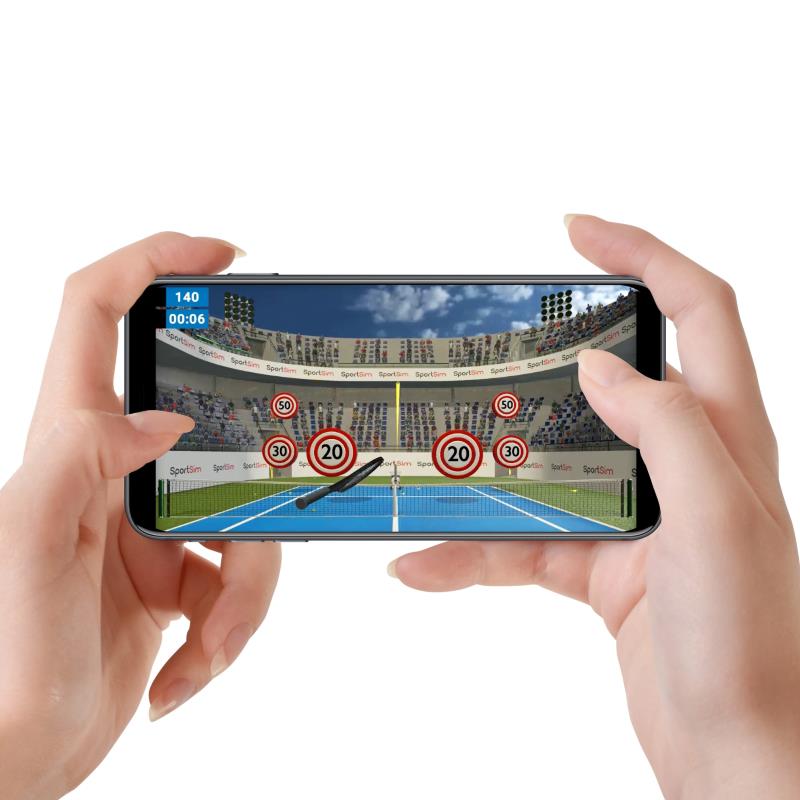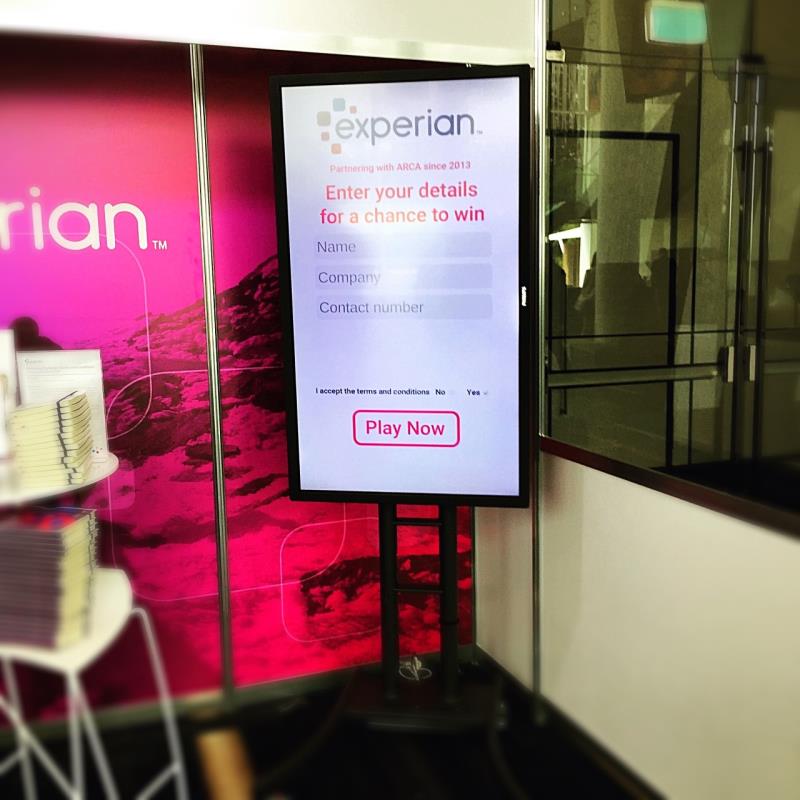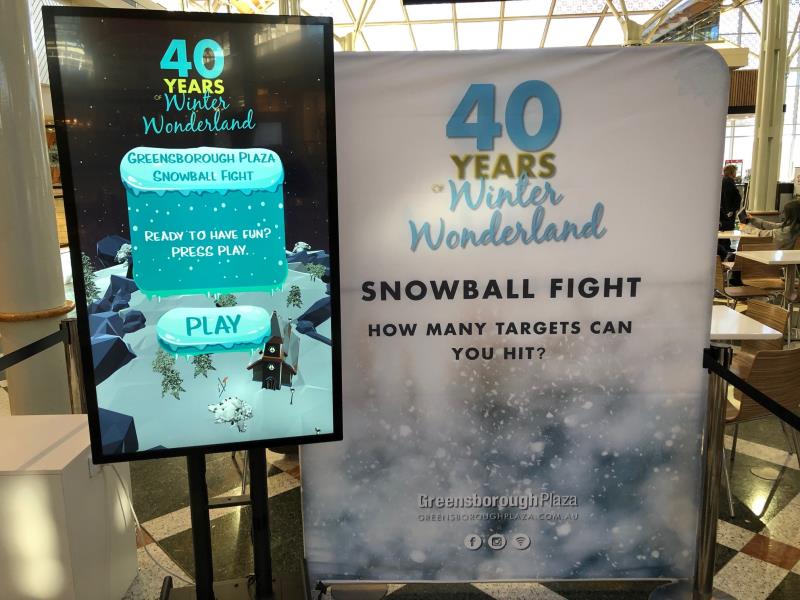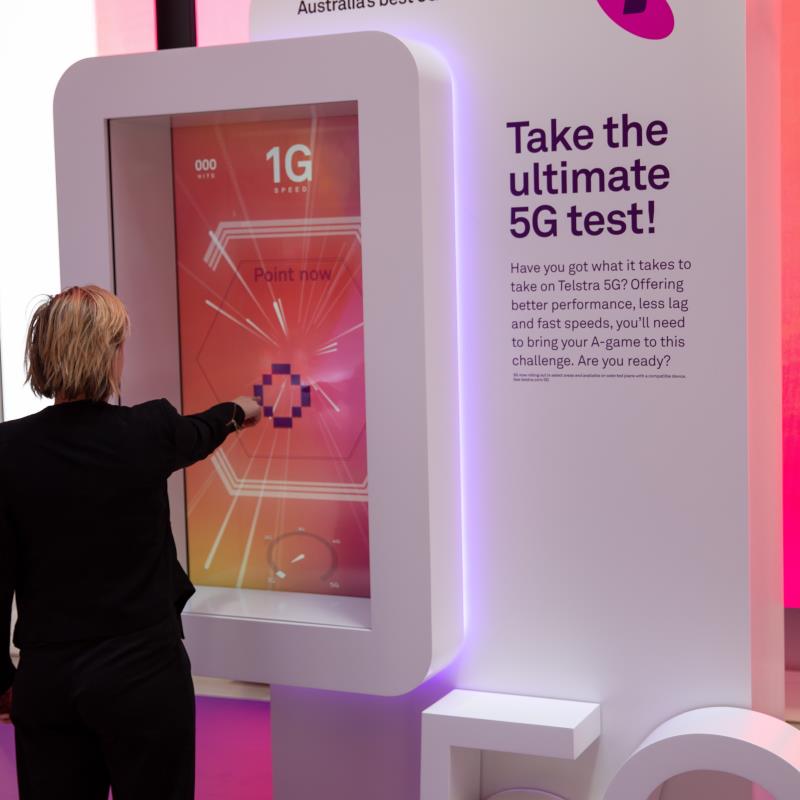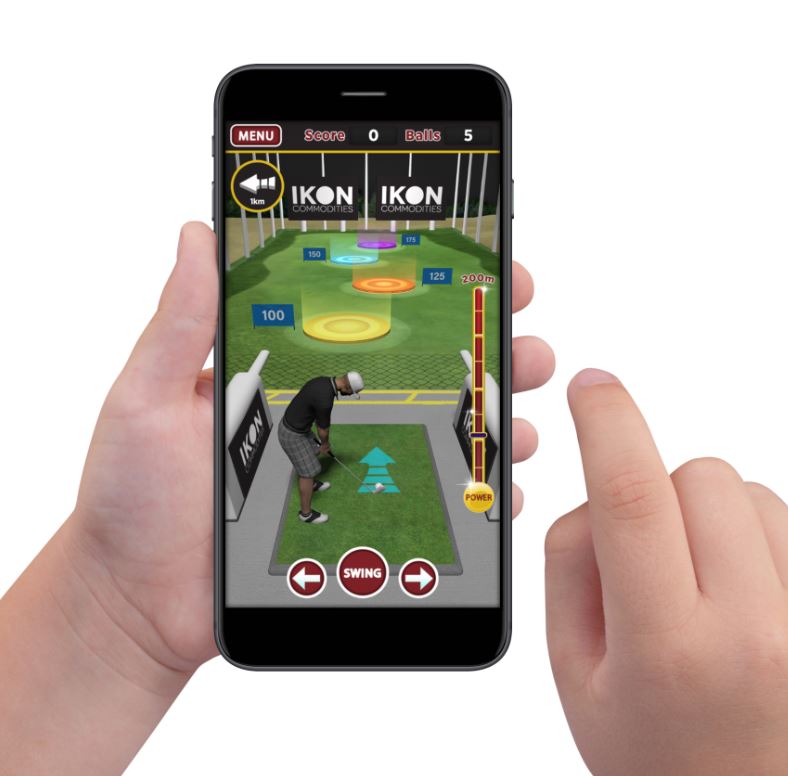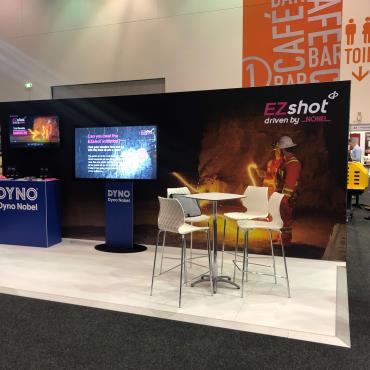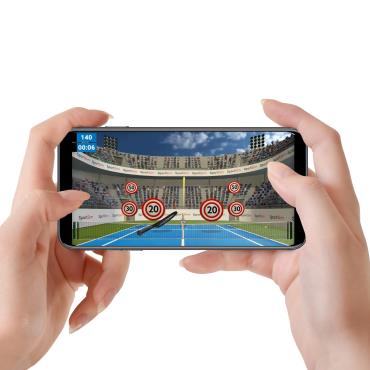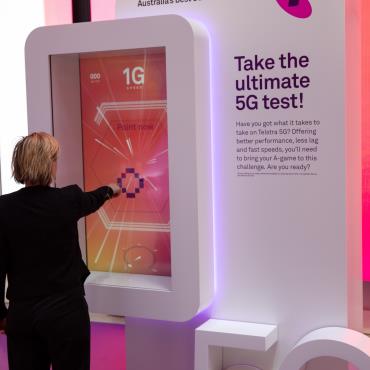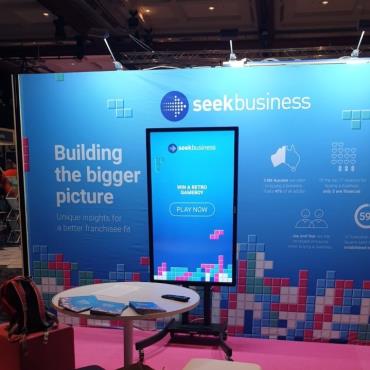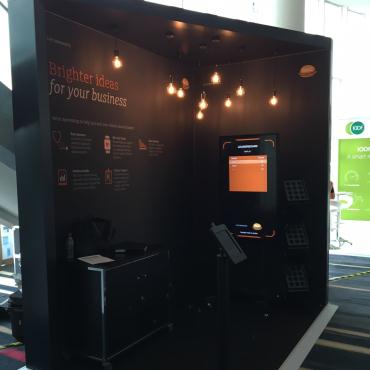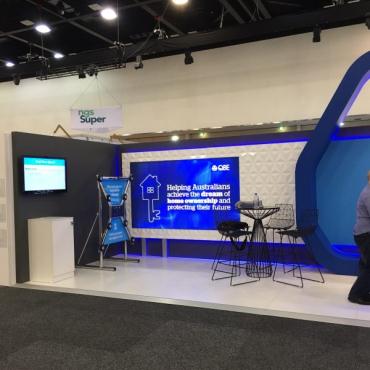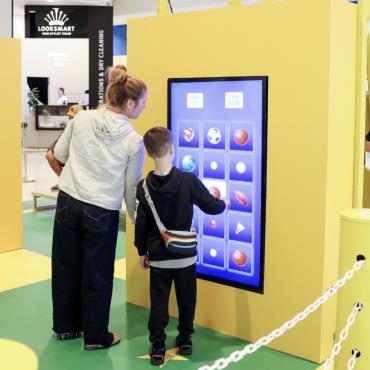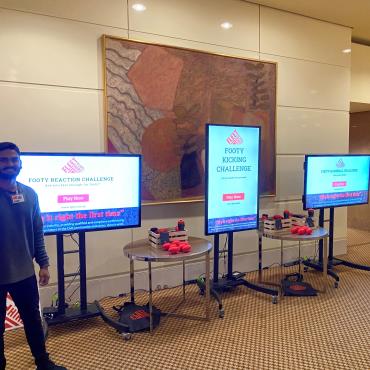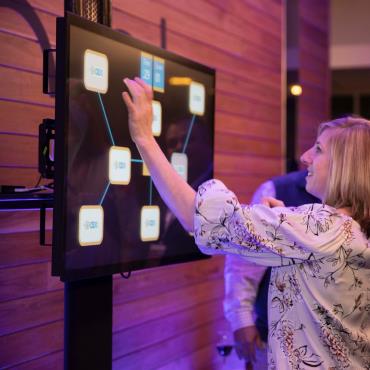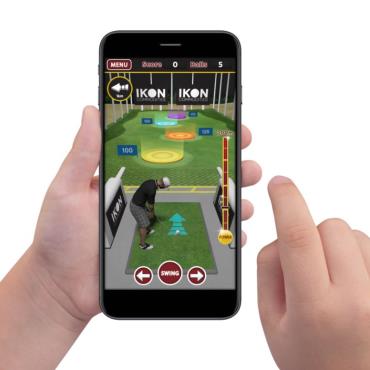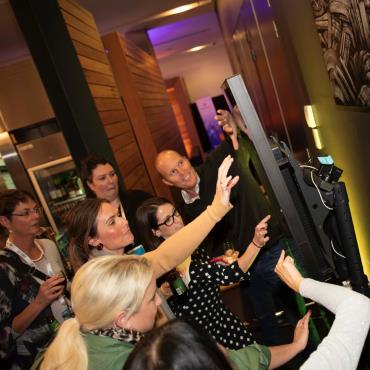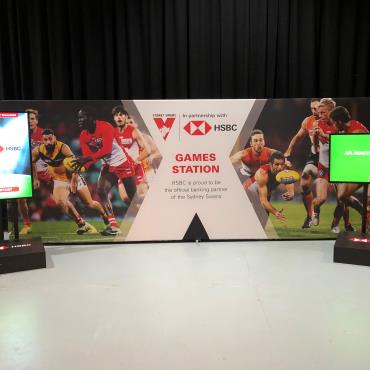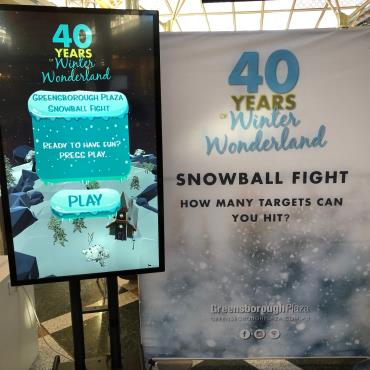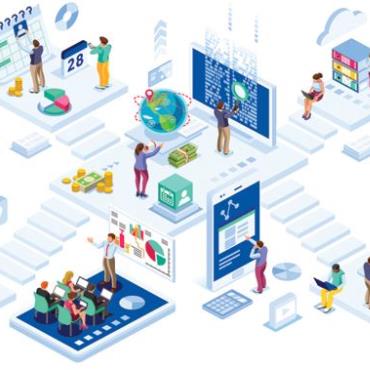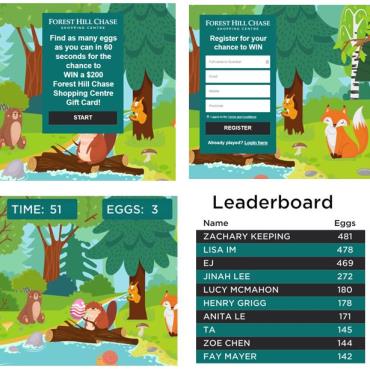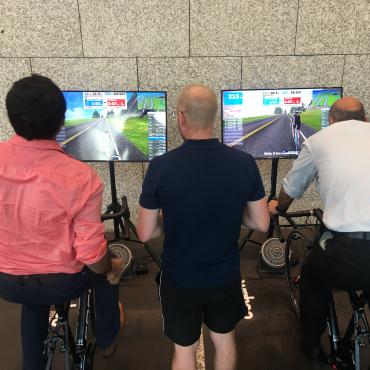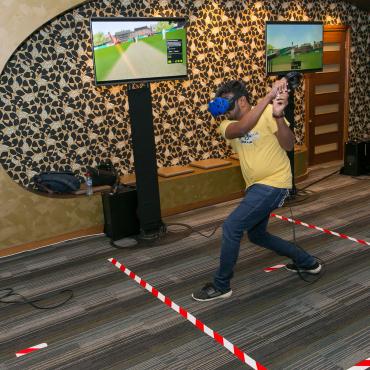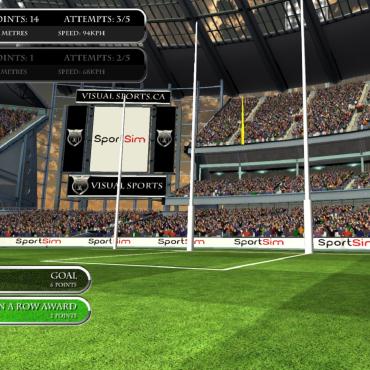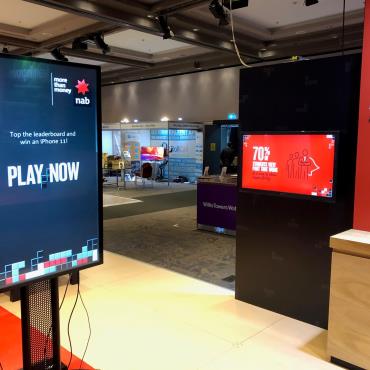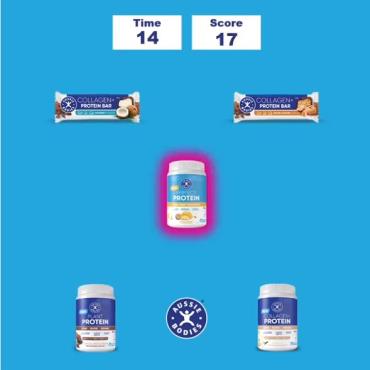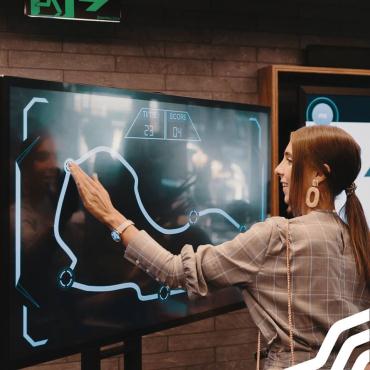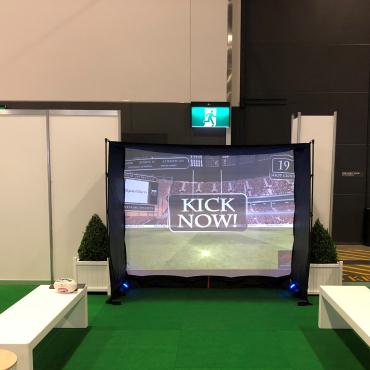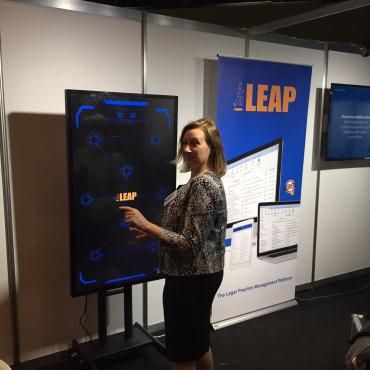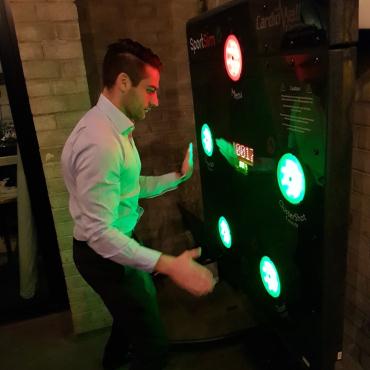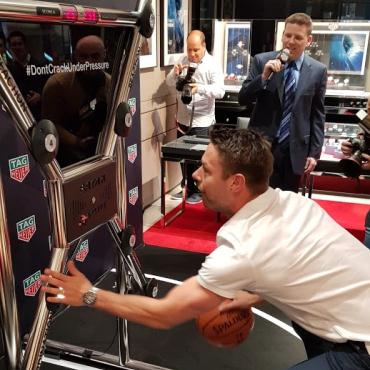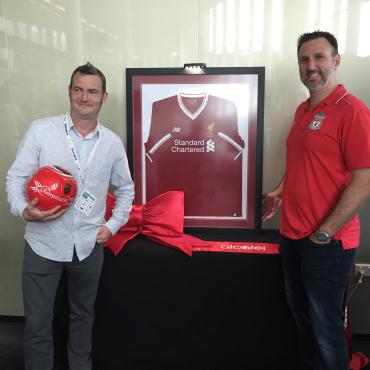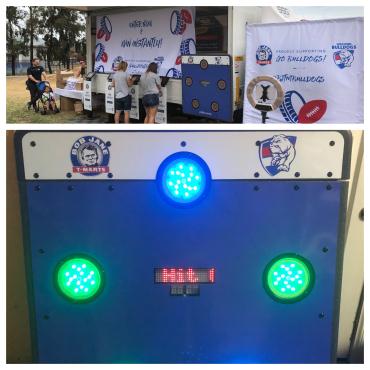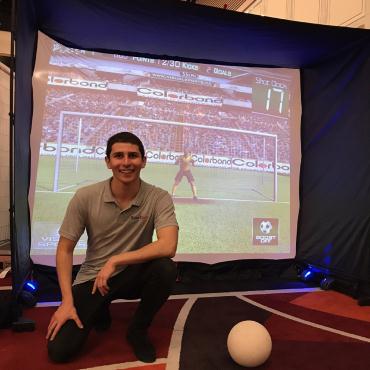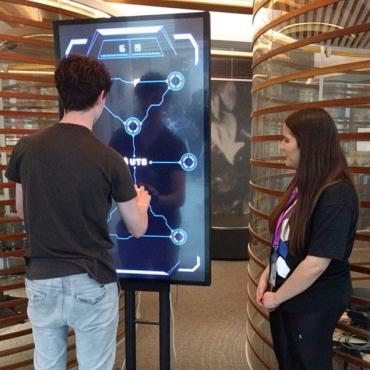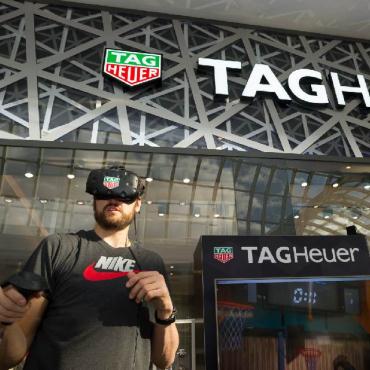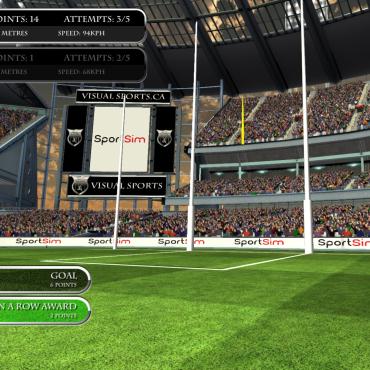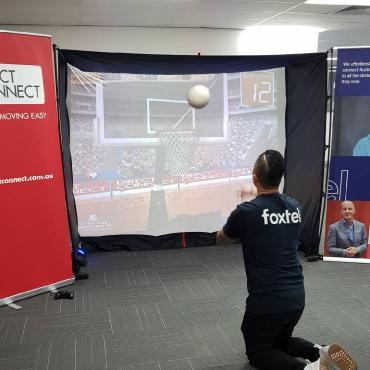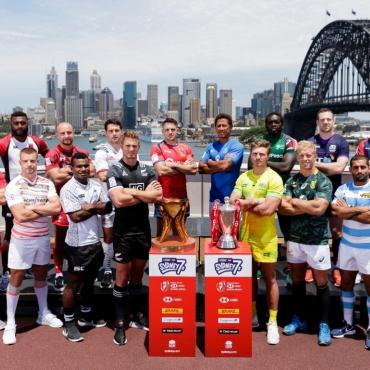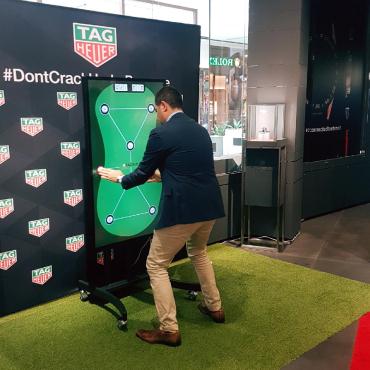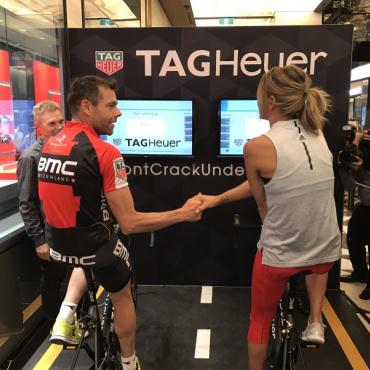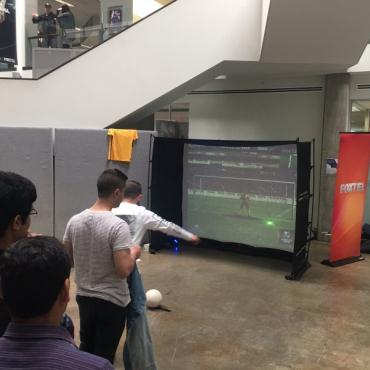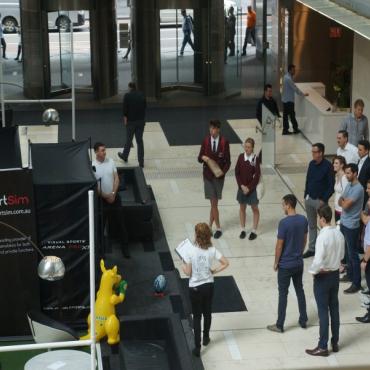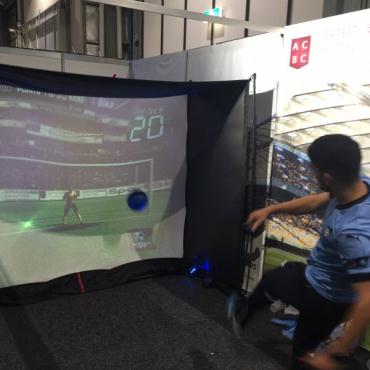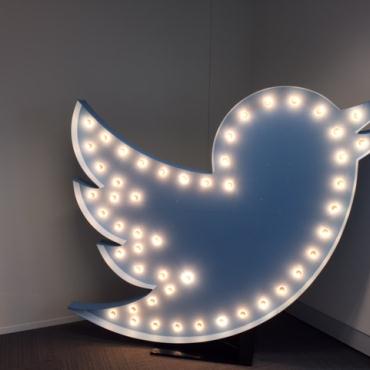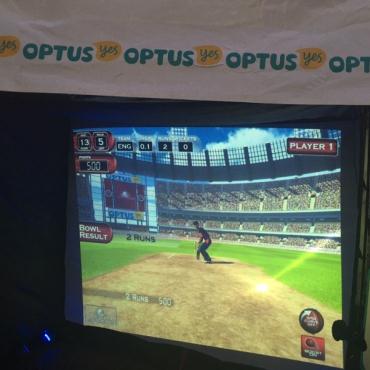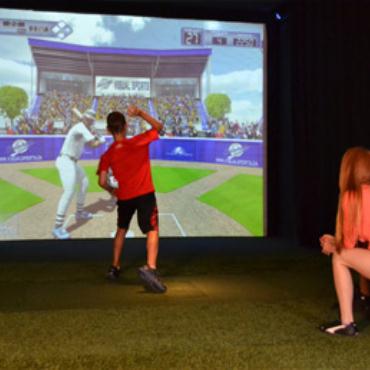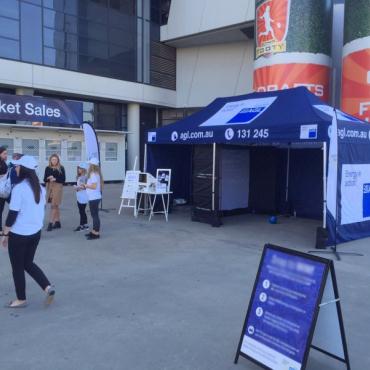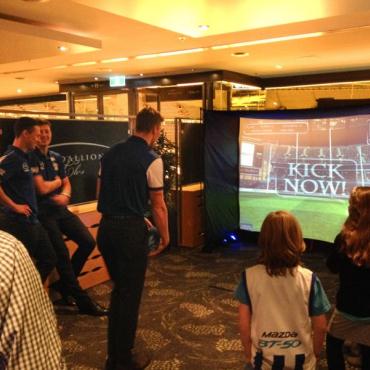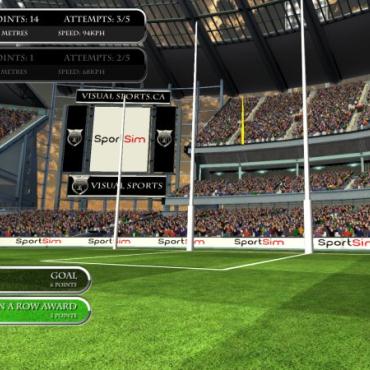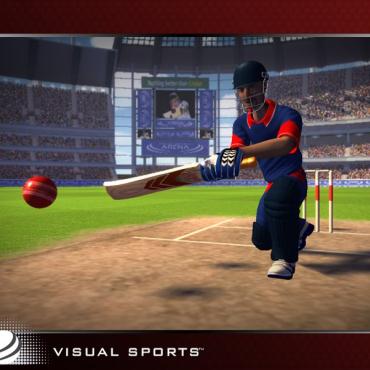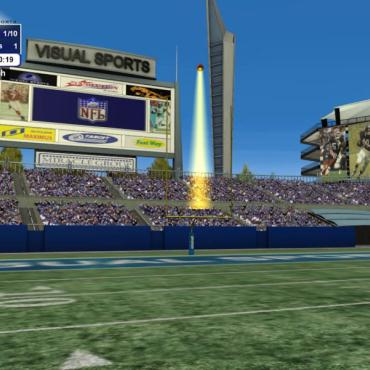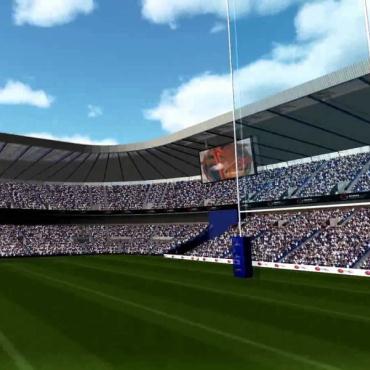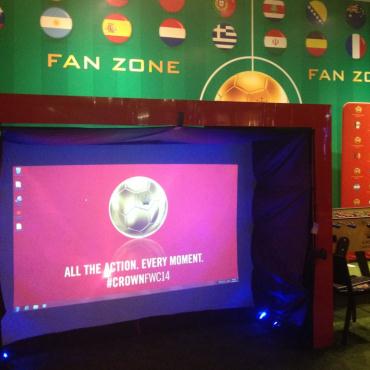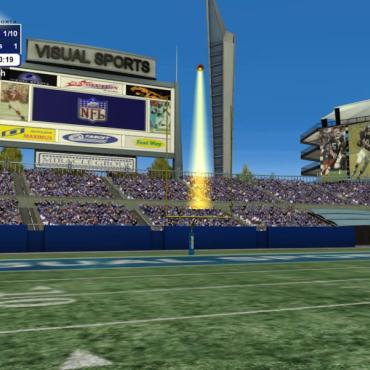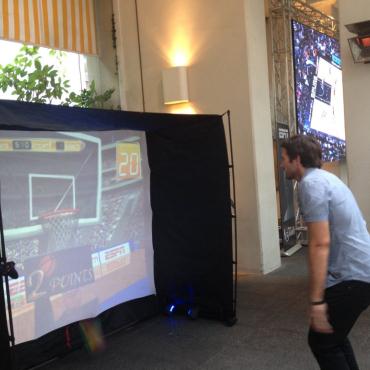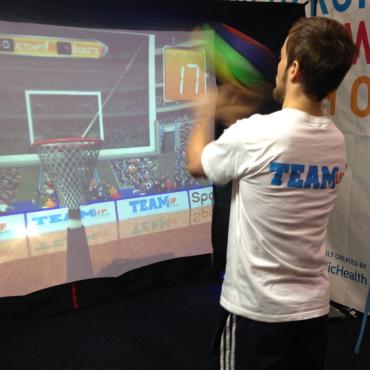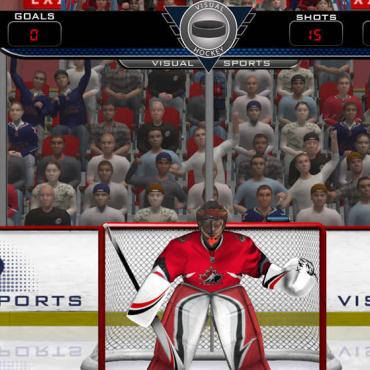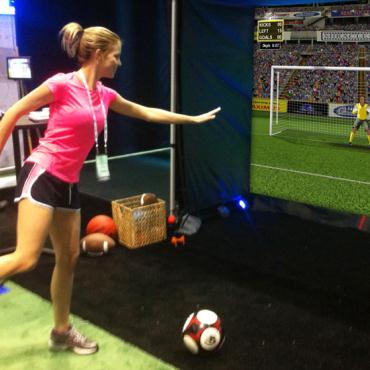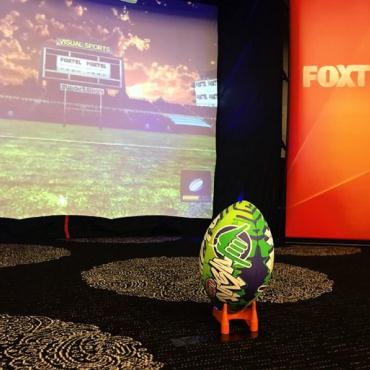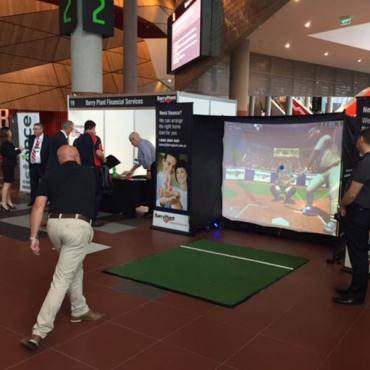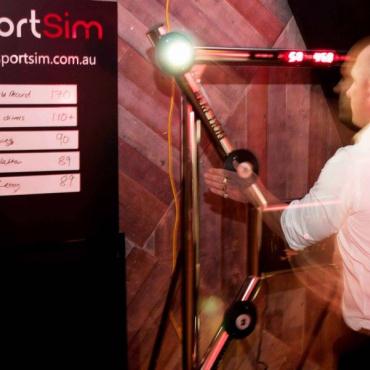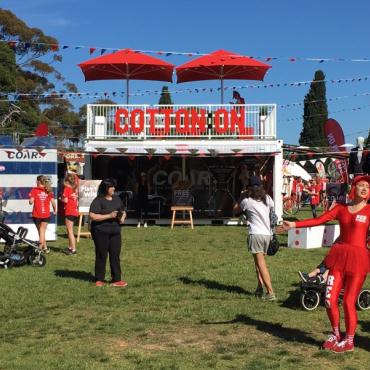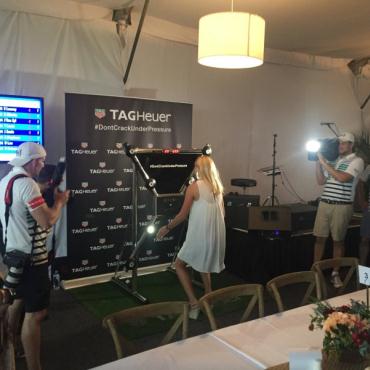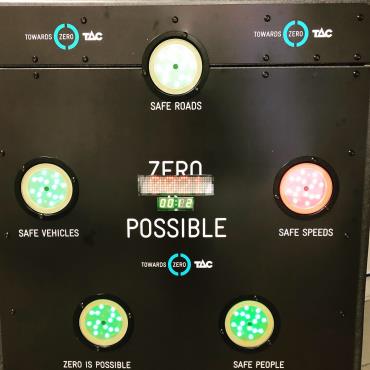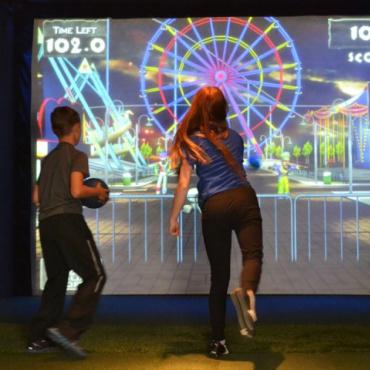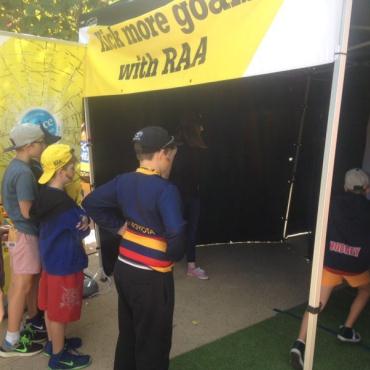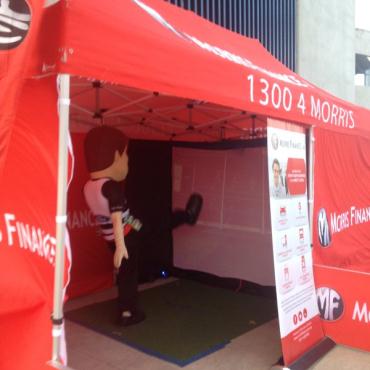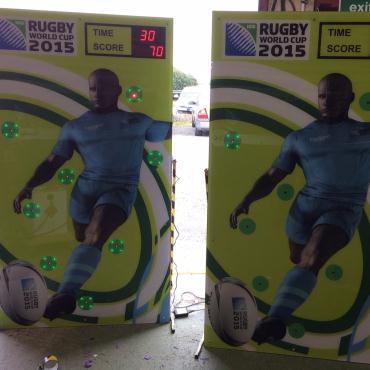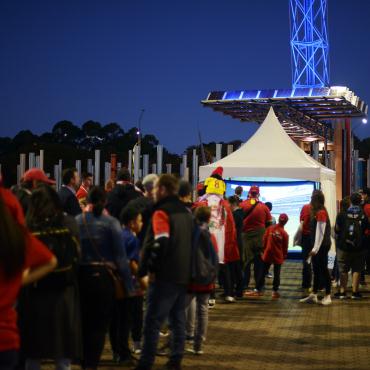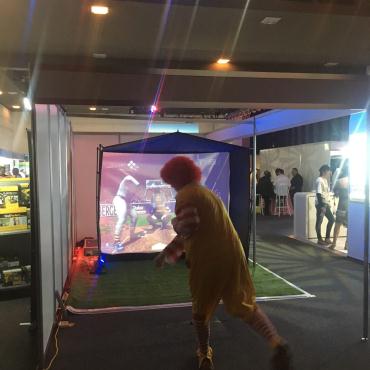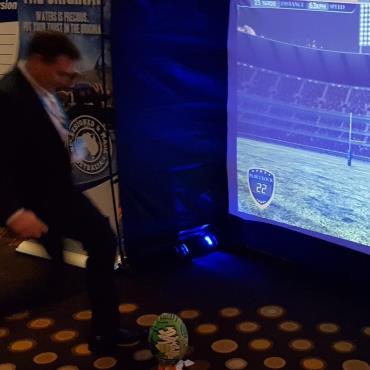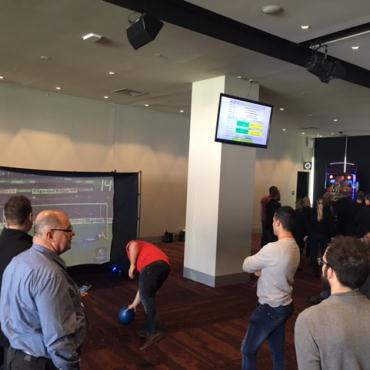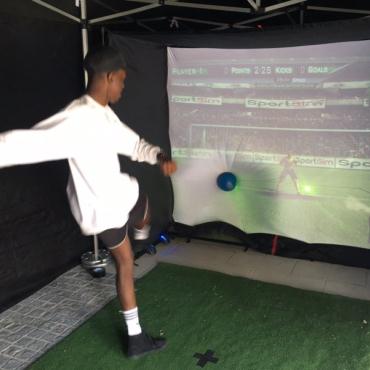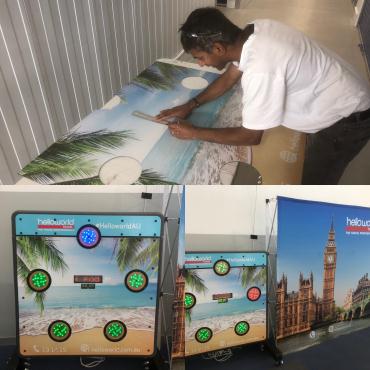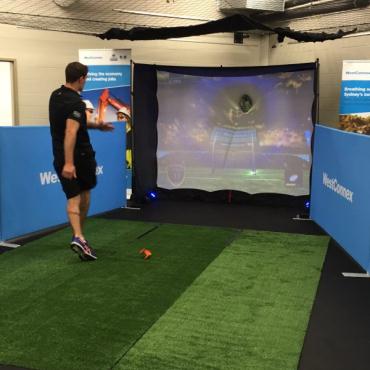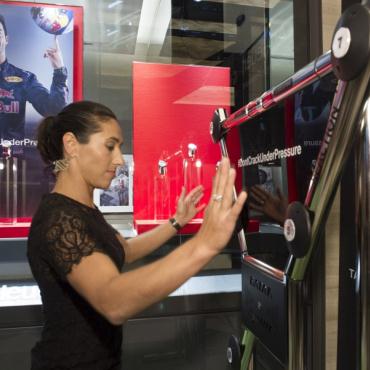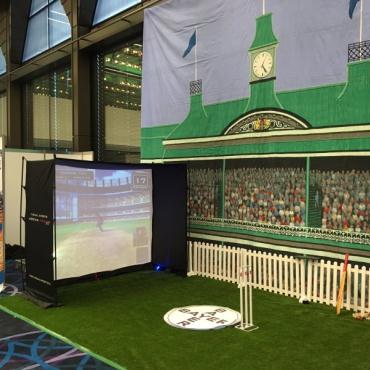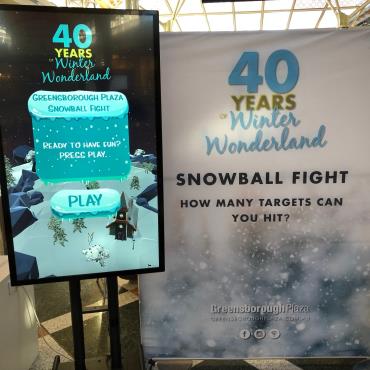The Science Behind Games
SportSim News
Do games work to achieve marketing outcomes? The answer is yes.
Gamification has emerged as a powerful new way to reach audiences and round out marketing strategies. Branded digital games are now appearing in mobile marketing, data collection, social media campaigns, experience marketing, events and conferences.
Across all platforms, games are linked to more engagement,higher data quality and stronger customer loyalty.Let’s take a look at the science behind those benefits.
It’s important to distinguish a stand-alone game from ‘Gamification’.
Gamification is based on a simple idea: take the things that make games fun and exciting, and apply them to other activities.¹ ²According to gamification expert Tadgh Kelly³, you can get consumers’ attention in three main ways:
● a sense of validation.
● the satisfaction of completing an activity.
● an external reward.
So, for example, a playable game experience with a leaderboard for high scores might give players a sense of validation.Finishing a branded game also gives them satisfaction. And an in-game reward makes them even happier. While banner ads and pop-ups are still unpopular with consumers, branded games and playable ads get much more favourable ratings. These ‘ads that users can play with’ have higher purchase intent⁴, higher conversion rates, higher lifetime customer value and lower bounce rates⁵.
"Playable ads and in-game advertising can boost purchase intent, conversion rates and lifetime customer value, and reduce bounce rates.”
However, game marketing goes even deeper.There’s another, even more powerful motivator at work. In order to gamify something, you have to make it interactive.
There’s a world of difference between passively reading content and actively engaging with some marketing content.Interactive media - such as games –increase brand recall because people think about what they’re seeing and physically respond to it⁶. Gamified, interactive media can even boost customer satisfaction and customer loyalty.
Most interesting of all, branded games are more effective when they don’t include monetary rewards⁷. The trio of validation, satisfaction and reward is more important to consumers than winning cash prizes or discounts.
“Games can increase customer satisfaction and customer loyalty scores. Most interesting of all, this effect works best when the game doesn’t include monetary rewards.”
So, incorporating games into a marketing campaign isn’t just a cute idea. It uses basic behavioural science to appeal to people on an instinctual level. But gamifying an existing business process is complex and not always appropriate. A much simpler approach,that can yield similar commercial dividends, is to use a stand-alone game in a campaign. Games can be used in this way to liven up events, impact a lead generation campaign, create awareness for a product launch, or to engage an existing customer database.
Games work by offering people a sense of validation,completion and reward. Those three elements have especially strong appeal for competitive business demographics such as sales professionals,entrepreneurs and executives.One study found that marketers respond even better to games than the general population⁸. That may be because they are competitive, pro-social people. The same holds true for entrepreneurs and business leaders, who tend to be similarly driven and sociable⁹.
“Gamification can tap into the natural competitiveness of entrepreneurs and C-suite executives. Marketers respond better to gamification more than typical audiences, perhaps because they enjoy the social element so much.”
Let’s take an example from Salesforce. The CRM platform has pioneered gamification for B2B marketing with a community for its users called Trailhead.All three elements of successful gamification are here:
● Validation, from points and badges.
● Completion, from taking courses and learning new skills.
● Reward, in the form of networking contacts through the platform.
With Trailhead, Salesforce applied some basic gamification principles to their content marketing. They added value for users and gave people a reason to be loyal to the CRM. And they did it all with a slick, professional-looking game.
Gamification works for other aspects ofB2B marketing, too. Let’s take another key B2B marketing tactic: data collection and lead qualification.
“Gamification can be used to collect more data and get higher-quality survey responses.”
Researchers from Oxford Brookes University found that gamification can increase the quality and quantity of the data you collect¹⁰. So how exactly does that work?The researchers tried gamifying surveys by embedding questions in real-world scenarios. This is knownas “soft gamification”, when users may not even realise that they’re taking part in a survey. From their point of view, they’re just playing a game.Storytelling within the game creates context for the survey questions. That context helps people to answer questions more authentically,and even gives you extra information about how they chose those answers.
Imagine how your sales strategy might change if you could understand exactly how your target audience makes big decisions. Imagine how your customer engagement might increase if you used games to interact with customers, instead of plain old emails and surveys. Imagine if, instead of giving customers the hard sell, you simply invited them to play.
It doesn’t have to be complicated – basic game experiences can be deployed in a variety of online or event settings, on relatively low budgets and quick timelines.From content marketing to data collection, digital events to experience marketing, games are shaking up the marketing world.
How will you use games?
Gamification has emerged as a powerful new way to reach audiences and round out marketing strategies. Branded digital games are now appearing in mobile marketing, data collection, social media campaigns, experience marketing, events and conferences.
Across all platforms, games are linked to more engagement,higher data quality and stronger customer loyalty.Let’s take a look at the science behind those benefits.
The science behind games
It’s important to distinguish a stand-alone game from ‘Gamification’.
Gamification is based on a simple idea: take the things that make games fun and exciting, and apply them to other activities.¹ ²According to gamification expert Tadgh Kelly³, you can get consumers’ attention in three main ways:
● a sense of validation.
● the satisfaction of completing an activity.
● an external reward.
So, for example, a playable game experience with a leaderboard for high scores might give players a sense of validation.Finishing a branded game also gives them satisfaction. And an in-game reward makes them even happier. While banner ads and pop-ups are still unpopular with consumers, branded games and playable ads get much more favourable ratings. These ‘ads that users can play with’ have higher purchase intent⁴, higher conversion rates, higher lifetime customer value and lower bounce rates⁵.
"Playable ads and in-game advertising can boost purchase intent, conversion rates and lifetime customer value, and reduce bounce rates.”
However, game marketing goes even deeper.There’s another, even more powerful motivator at work. In order to gamify something, you have to make it interactive.
There’s a world of difference between passively reading content and actively engaging with some marketing content.Interactive media - such as games –increase brand recall because people think about what they’re seeing and physically respond to it⁶. Gamified, interactive media can even boost customer satisfaction and customer loyalty.
Most interesting of all, branded games are more effective when they don’t include monetary rewards⁷. The trio of validation, satisfaction and reward is more important to consumers than winning cash prizes or discounts.
“Games can increase customer satisfaction and customer loyalty scores. Most interesting of all, this effect works best when the game doesn’t include monetary rewards.”
So, incorporating games into a marketing campaign isn’t just a cute idea. It uses basic behavioural science to appeal to people on an instinctual level. But gamifying an existing business process is complex and not always appropriate. A much simpler approach,that can yield similar commercial dividends, is to use a stand-alone game in a campaign. Games can be used in this way to liven up events, impact a lead generation campaign, create awareness for a product launch, or to engage an existing customer database.
Do games work for marketing?
Games work by offering people a sense of validation,completion and reward. Those three elements have especially strong appeal for competitive business demographics such as sales professionals,entrepreneurs and executives.One study found that marketers respond even better to games than the general population⁸. That may be because they are competitive, pro-social people. The same holds true for entrepreneurs and business leaders, who tend to be similarly driven and sociable⁹.
“Gamification can tap into the natural competitiveness of entrepreneurs and C-suite executives. Marketers respond better to gamification more than typical audiences, perhaps because they enjoy the social element so much.”
So what does gamification look like?
Let’s take an example from Salesforce. The CRM platform has pioneered gamification for B2B marketing with a community for its users called Trailhead.All three elements of successful gamification are here:
● Validation, from points and badges.
● Completion, from taking courses and learning new skills.
● Reward, in the form of networking contacts through the platform.
With Trailhead, Salesforce applied some basic gamification principles to their content marketing. They added value for users and gave people a reason to be loyal to the CRM. And they did it all with a slick, professional-looking game.
Gamification works for other aspects ofB2B marketing, too. Let’s take another key B2B marketing tactic: data collection and lead qualification.
“Gamification can be used to collect more data and get higher-quality survey responses.”
Researchers from Oxford Brookes University found that gamification can increase the quality and quantity of the data you collect¹⁰. So how exactly does that work?The researchers tried gamifying surveys by embedding questions in real-world scenarios. This is knownas “soft gamification”, when users may not even realise that they’re taking part in a survey. From their point of view, they’re just playing a game.Storytelling within the game creates context for the survey questions. That context helps people to answer questions more authentically,and even gives you extra information about how they chose those answers.
Imagine how your sales strategy might change if you could understand exactly how your target audience makes big decisions. Imagine how your customer engagement might increase if you used games to interact with customers, instead of plain old emails and surveys. Imagine if, instead of giving customers the hard sell, you simply invited them to play.
It doesn’t have to be complicated – basic game experiences can be deployed in a variety of online or event settings, on relatively low budgets and quick timelines.From content marketing to data collection, digital events to experience marketing, games are shaking up the marketing world.
How will you use games?
References
- 1 (PDF) Gamification: Using game design elements in non-gaming contexts (researchgate.net)
- 2 Gamification: Making work fun, or making fun of work? - Steve Dale, 2014 (sagepub.com)
- 3 Everything You’ll Ever Need To Know About Gamification | TechCrunch
- 4 In game advertising (slideshare.net)
- 5 8 Quick Tips To Create Compelling Playable Ads (appsamurai.com)
- 6 Interactive ads boost engagement and recall | Ad Tech | News | Rapid TV News
- 7 Gamifying the digital shopping experience: games without monetary participation incentives increase customer satisfaction and loyalty | Emerald Insight
- 8 Learning Marketing Online: The Role of Social Interactions and Gamification Rewards - Vytautas Dikcius, Sigitas Urbonavicius, Karina Adomaviciute, Mindaugas Degutis, Ignas Zimaitis, 2020 (sagepub.com)
- 9 Strengths & Weaknesses | Entrepreneur (ESTP) Personality | 16Personalities
- 10 Gamification in Market Research: Increasing Enjoyment, Participant Engagement and Richness of Data, but what of Data Validity? - Pippa Bailey, Gareth Pritchard, Hollie Kernohan, 2015 (sagepub.com)

